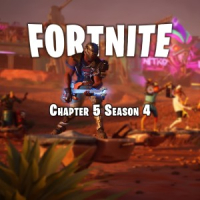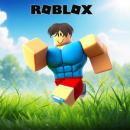


Review
I still vividly remember the anticipation as I strapped on my VR headset for the first time and launched Gorilla Tag. The experience was unlike any other; my heart raced with excitement as I took my first virtual step into a whimsical world where the rules of gravity and movement were redefined. I, a devoted fan of virtual reality adventures, was immediately drawn into the exhilarating premise of traversing through a dynamic playground as an agile ape. The initial moments were filled with a sense of wonder, balanced by a hint of trepidation, as I learned to trust my body in a world where every leap was a challenge and every swing a triumph.
The Magic of Anthropomorphic Freedom
What struck me most at the outset was the freedom to embody an ape with a sense of unbridled energy. Unlike conventional games that rely on the familiarity of human locomotion, Gorilla Tag demands a complete departure from the norm. I was captivated by how natural it felt to move by swinging my arms, mimicking the fluid motions of a primate. This innovative movement mechanic generated a unique interplay between physical exertion and digital navigation that resonated deeply with my love for body-centric gaming experiences. The freedom to explore the environment in such an organic way made every session a thrilling experiment in raw, physical fun.
The Art of Locomotion Redefined
One of the most impressive aspects of this immersive experience was the re-imagination of locomotion. Most VR titles opt for conventional teleportation or button-press movements, but Gorilla Tag challenges that approach, insisting I rely solely on my physical actions. Swinging from branches, moving between elevated platforms, and grappling with the environment required a level of coordination and understanding of in-game physics unlike any other game I have played. I found myself constantly aware of how each movement could result in a triumphant leap forward or a playful tumble that added to the excitement of the journey.
A Journey Through a Lush, Intricate Environment
As I delved further into the game, I was struck by the intricacy of the environment. Every corner of Gorilla Tag'svirtual landscape is meticulously crafted to evoke the feel of a natural arboreal paradise. The textures, colors, and ambient details coalesce to form an ecosystem that is both vibrant and challenging. I encountered various obstacles and hidden shortcuts among clusters of trees and rugged structures that demanded careful navigation. The environmental design did not simply serve as a backdrop but was integral to the gameplay, encouraging me to experiment with different routes and maneuvers.
The Joy of Physical Exertion and Skill Mastery
My sessions in Gorilla Tag were intense workouts that tested both my physical agility and my mental ingenuity. I relished every opportunity to develop better timing, precision, and balance as I leaped from branch to platform. The game’s skill curve is uniquely rewarding; initial struggles quickly give way to gratifying moments of mastery. With each session, I observed improvements in my coordination, and the expenditure of physical energy added an element of healthy fitness to the experience. Every time I executed a particularly challenging swing or an expertly-timed leap, a sense of pride would swell within me, making me appreciate the game’s commitment to encouraging real physical effort.
The Soundscape of the Virtual Jungle
While Gorilla Tag is celebrated for its kinetic gameplay, its auditory design is a quiet yet significant element of its immersive allure. The background sounds meticulously mimic the subtleties of a vibrant jungle—from the rustle of leaves and creaking tree branches to distant animal calls that punctuate the serene atmosphere. Through my headset, each sound added layers of depth, creating an auditory map that complemented the physical sensations of movement. I found that these auditory cues not only built tension during swift chases but also enhanced the feeling of being truly present in an otherworldly environment.
Mastering the Art of Aerial Maneuvers
What I found particularly exhilarating was the challenge of performing aerial maneuvers that defied gravity. Unlike traditional platformers where jumps are predetermined and forgiving, Gorilla Tag demands precision. Every leap, everyswing had to be carefully calculated so I could reach the intended platform or evade an approaching pursuit. It was not simply a matter of reaching an end point; it was about the journey of mastering the complex physics that governed air movement in the game. The satisfaction I experienced when executing a flawless maneuver was unforgettable andreaffirmed my dedication to honing the necessary skills.
An Engaging Social Experience
Beyond its single-player challenges, Gorilla Tag offers a thriving multiplayer dimension that has profoundly enriched my gaming experience. The competitive tag matches and cooperative expeditions with friends have created countless memorable moments. I recall vividly those heart-pounding chases involving friends in virtual arenas, where laughter and light-hearted banter accompanied every near-miss and perfectly executed chase. The social dynamics are sensitive to the playful spirit of the game, making every interaction feel as spontaneous and organic as if I were truly in the company of energetic primates. The spontaneity of each session made me appreciate how the game encourages teamwork, friendly rivalry, and community spirit.
Embracing the Unpredictability of Competitive Play
Competing in multiplayer sessions further reinforced my admiration for Gorilla Tag. Each match is an unpredictable dance of agility and strategy, where every player’s distinctive approach contributes to an ever-changing gameplay dynamic. I found that the thrill of outmaneuvering an opponent or catching an elusive target was amplified by the adrenaline rush of knowing that any slight mistake could cost me precious seconds. The competitive aspect of the gameforced me to constantly evolve my own methods and precision, adapting quickly to the varied techniques of other players.This blend of unpredictability and skill-based competition keeps the game fresh and perpetually exciting.
Immersing in the Physicality of Virtual Interactions
Gorilla Tag is a game that brings the physicality of real-world activity into the VR space. The emphasis on arm movements and tangible actions makes the experience feel authentic, bridging the gap between digital gaming and physical exercise. I discovered that the game effectively transforms my living room into an arena of physical challenges, where every movement has purpose and interaction. The connection between my bodily sensations and the game’sresponse was so finely tuned that it often felt like an extension of my own physical self. This integration of exercise and immersive gameplay not only made each session vigorous but also deeply fulfilling on a personal level.
The Challenge of Perfecting Arm Swing Dynamics
Among the most notable challenges in the game is perfecting the arm swing dynamics. As I continued to play, I became increasingly aware of the need to synchronize my physical movements with the virtual avatar’s response. Initially, I grappled with unexpected inertia that sometimes skewed my intended path, but with patience and repetition, I began to understand the subtle nuances in the timing and force required. The game’s mechanics reward perseverance; each trial improved my control and coordination. I vividly recall the moment when a flawlessly executed swing led me to a particularly difficult-to-reach platform, a small victory that encapsulated the game’s emphasis on developing physical skills through relentless practice.
The Visual Aesthetics and Simplicity of Design
The visual presentation of Gorilla Tag is a study in simplicity and effective aesthetic design. The graphics are minimalistic yet remarkably engaging, striking the perfect balance between artistic abstraction and functional clarity. I appreciated how the game does not rely on flashy visual effects to convey excitement. Instead, it utilizes a charming palette of earthy tones coupled with crisp, clean lines that delineate the environment with precision. This straightforward approach allows the focus to remain on the gameplay, ensuring that every movement and obstacle is easily identifiable without unnecessary visual clutter. As I navigated through the stylized terrain, I discovered that the understated graphic style added to the overall immersion by keeping the experience visually coherent and pleasing.
An Exploration of Environmental Complexity
Delving into the diverse environments within Gorilla Tag opened my eyes to the inventive ways game designers can challenge the player. Each area is constructed with a high degree of thoughtfulness, presenting players with configurations that alter the dynamics of movement and strategy. From open spaces that demand rapid maneuvers to intricate maze-like clusters that reward thoughtful planning, the game consistently surprises me. I encountered natural obstacles such as tree clusters, rocky outcrops, and elevated platforms that demanded not only physical effort but also quick strategic thinking.Every new environment presented an opportunity to refine my skills, offering unique puzzles in the form of spatial challenges. The complexity of these regions further enriched my overall experience, ensuring that no two gameplay sessions ever felt repetitive.
The Thrill of Exploration Beyond the Familiar
In Gorilla Tag, exploration extends beyond simply mastering the obvious paths within a familiar setting. The game actively encourages me to venture into lesser-known territories where hidden routes and secret challenges await discovery. I found that these uncharted areas frequently required innovative thinking and lateral movement strategies, rewarding me with the delight of unexpected shortcuts or the satisfaction of discovering a new vantage point. The thrill of exploration created a sense of wonder that propelled me to continue playing and experimenting with different approaches. Each journey felt like an adventure where the rules of engagement were always in flux, adding a layer of excitement to even the most routine movements.
A Study in Physical Engagement and Endurance
What truly sets Gorilla Tag apart is its embodiment of physical engagement, merging intense gameplay action with a genuine workout. Every session is a test of endurance as I engage in rapid-fire movements, constantly pushing my physical limits to achieve precise and graceful maneuvers. Over time, I noticed improvements in my stamina and overall physical coordination; it felt as if the game was not only challenging my reflexes and agility in a virtual space but was also providing a vigorous aerobic dance routine. This unexpected dimension of physical fitness became a driving force behind my commitment to the game, as it offered an organic blend of entertainment and exercise—each swing and jump was a testament to my evolving physical prowess.
Adapting to the Unconventional Control Scheme
Initially, I encountered a steep learning curve with Gorilla Tag's unconventional control scheme, which relies exclusively on natural arm movements rather than traditional button-press inputs. The early moments of hesitation, where my body unexpectedly did not match my intentions, gradually transformed into moments of triumph as I mastered the intricate synchronization between mind and movement. It took time and repeated practice, but once I got the hang of it,the control scheme felt intuitive and highly responsive. I became appreciative of the deliberate choice by the developers to make players work for every movement; this hands-on approach fostered a deeper connection between my physical actions and the virtual outcomes, instilling a sense of genuine achievement with every successfully navigated obstacle.
Exploring the Nuances of Multiplayer Dynamics
The multiplayer dynamics in Gorilla Tag have been an endless source of interest for me. From engaging in friendly chases with fellow primates to creative collaborative explorations, the multiplayer mode transforms the game into a social playground where every participant contributes to an evolving narrative of motion and excitement. I discovered that the unpredictability of other players’ actions introduced a layer of complexity that kept every match fresh and dynamic. Whether in a spontaneous free-for-all chase or a coordinated effort to outmaneuver a particularly talented opponent, the competitive spirit was always tempered by the camaraderie that emerged from shared playful experiences. It is this balance of organized chaos and emergent social interaction that makes every multiplayer session an adventure in its own right.
The Integration of VR Technology with Innate Physical Movement
I remain continually captivated by the flawless blending of state-of-the-art VR technology with the natural, instinctive movements of the human body. Gorilla Tag is a masterclass in how virtual environments can be designed to respect and enhance the player's physicality rather than abstract it away behind digital controls. Each time I took a leap or swung across a gap, I felt an authentic connection between my physical actions and the digital reaction, an interplay that felt both challenging and gratifying. The game’s sensitivity to even slight variations in movement allowed me to feel truly immersed, as if my own physicality was directly responsible for navigating this vibrant, virtual jungle. This unmediated connection is one of the most compelling aspects of my ongoing experience with the game.
The Allure of Unstructured Play
A notable element in my journey with Gorilla Tag is the sense of unstructured exploration that it fosters. Unlike many games that box you into narrowly defined objectives and linear progressions, Gorilla Tag offers a sandbox of unpredictable, freeform play. I appreciated how the game allowed me to create my own challenges and decide on my path through the environment. Rather than following a prescribed storyline or a rigid set of tasks, I found myself improvising, using the environment as both my playground and my training ground. This kind of freedom is incredibly rare in the realm of VR gaming, and it gave me a continuous stream of opportunities to experiment, take calculated risks, and derive enjoyment from the simplest act of swinging through space.
Discovering the Intricacies of Game Physics
Diving deeper into the mechanics of Gorilla Tag, I became fascinated by the intricacies embedded within its physics engine. Every movement in the game is governed by a set of physics laws that, while abstract, manage to mimic the unpredictability and momentum of real-world motion. I found myself constantly intrigued by how my body, acting as the sole controller, produced a cascade of physical reactions that felt both plausible and surprising. Subtle variations in arm movement created significant differences in trajectory, and perfecting these nuances became a rewarding puzzle in itself. This immersive interplay between intuitive physicality and accurately modeled physics brought an entirely new depth to my gaming experience, as I could almost predict and then artfully surprise the outcome with each well-timed move.
An Exploration of Adaptive Challenge Levels
What has continually captured my interest about Gorilla Tag is its ability to adapt to the player’s skills over time. In my early sessions, the obstacles felt overwhelmingly challenging—a barrage of physical tests that demanded immediate adaptation. However, as I became more proficient, the game revealed layers of additional complexity that kept me on my toes. I started to notice that what once seemed insurmountable gradually became a test of precision and advanced strategy. The dynamic nature of the obstacles meant that there was always an opportunity to push further, to refine my techniques, and to explore unexpected elements within the environment. This adaptive progression of challenge not only kept me engaged but also instilled a profound sense of personal growth intertwined with every victorious leap and deft maneuver.
The Impact of a Vibrant and Responsive Community
My journey with Gorilla Tag has been greatly enriched by the vibrant community of fellow players. The shared enthusiasm for the game, active discussions about tactics, and the constant exchange of creative ideas have all played a significant role in deepening my engagement. I remember participating in lively voice chats where strategies for complex maneuvers were dissected and refined in real time. This collective energy and mutual support created an environment where innovation and friendly competition went hand in hand. Being part of a community that values the art of movement and the joy of shared play further magnified the overall experience, encouraging me to continually explore creative ways to interact with this unconventional digital jungle.
An Ever-Evolving Playground of Opportunities
What keeps me returning to Gorilla Tag is the inherent sense that the game is an ever-evolving playground of opportunities. Every session revealed something new: a hidden alcove, an ingenious movement mechanic I hadn’t tried before, or an unexpectedly fun interaction with another enthusiastic player. I constantly discovered that my environment was laden with untapped potential, offering countless variations in how I could approach even the most familiar challenges. This perpetually evolving landscape prevented the gameplay from ever feeling stale or predictable. Instead, it nurtured an atmosphere of continuous exploration and playful experimentation, keeping my passion for the game as vibrant as ever.
Pros
- Immersive physical gameplay that encourages exercise and enhances agility
- Innovative control scheme based on intuitive arm movements to traverse environments
- Dynamic game difficulty that adapts to the player's skill level for continued challenge
- Engaging multiplayer experience that fosters community and friendly competition
- Minimalistic yet appealing graphics that prioritize clarity and functionality
- Inventive level and environment design that rewards creative exploration
Cons
- Steep learning curve for newcomers to VR or unconventional control mechanics
- Potential for physical fatigue during extended gameplay sessions due to repetitive motion
- Occasional issues with motion tracking that can disrupt gameplay continuity















Leave a comment
Your comment is awaiting moderation. We save your draft here
0 Comments